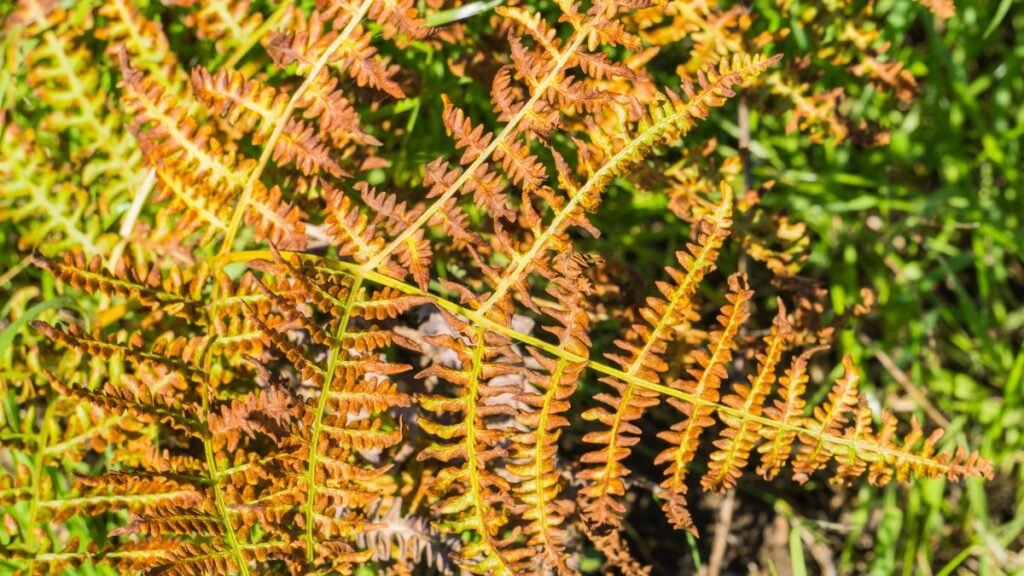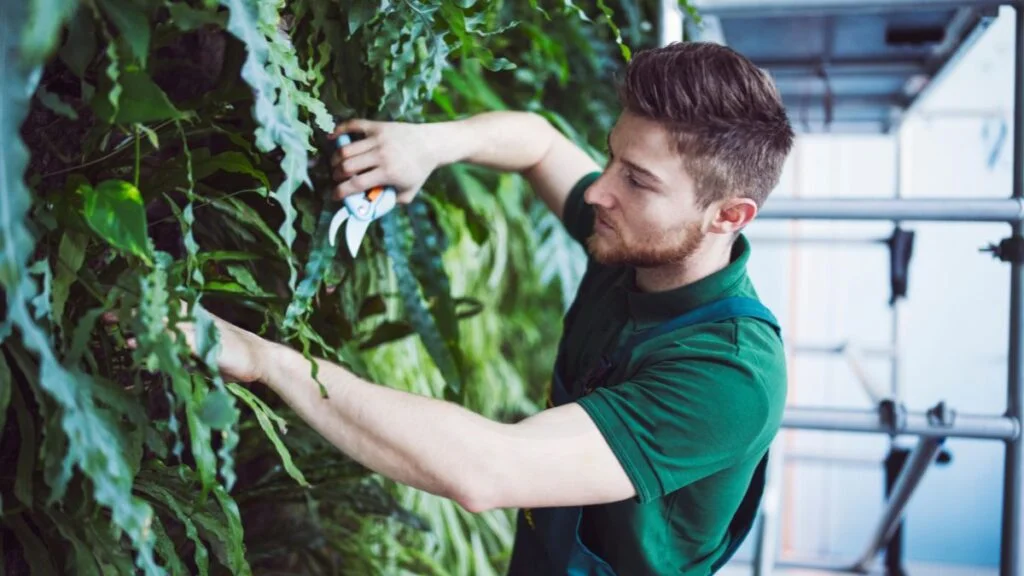Discover the secrets to reviving a wilting fern and bringing it back to life, especially if affected by brown leaves, frosts, or sun. Whether your fern is suffering from dehydration, improper lighting, or root-bound conditions, we've got you covered with practical tips and expert advice. Learn how to save your dying fern and create the optimal environment for it to thrive once again.
Follow our step-by-step guide to rescue your beloved plant and enjoy its lush greenery for years to come.
Key Takeaways
- Identify Fern Distress: Look for signs of distress in your fern such as yellowing fronds or wilting leaves to address the issue promptly.
- Revive with Proper Techniques: Implement appropriate revival techniques like trimming dead fronds and adjusting light and humidity levels to help your dying fern recover its leaves.
- Indoor Care Matters: Provide adequate indoor care by maintaining consistent watering schedules, avoiding drafts, and periodically misting your fern to keep it healthy.
- Prevent Ailments: Prevent fern ailments by ensuring proper ventilation, avoiding overwatering, and regularly inspecting your plant for any signs of pests or diseases.
- Optimize the Environment: Optimize the environment for your fern by placing it in a location with indirect sunlight, maintaining consistent humidity levels, and avoiding temperature extremes.
- Water Wisely: Water your fern wisely by allowing the top inch of soil to dry out between waterings and using room temperature water to avoid shocking the plant.
Identifying Fern Distress

Yellowing Leaves
Trim yellowing leaves close to the base to promote new growth. Check for overexposure to sunlight as it can cause yellowing. Monitor soil moisture levels regularly to prevent yellowing and maintain plant health.
Dry Fronds
Mist dry fronds regularly with water to increase humidity levels around the fern. Avoid underwatering by checking soil moisture frequently and adjust watering accordingly. Consider relocating the fern away from direct heat sources to prevent drying out of fronds.
Stunted Growth
Provide adequate water and nutrients such as a balanced fertilizer to promote healthy growth. Ensure proper lighting conditions, preferably indirect sunlight, for optimal growth. Check for any signs of pests that may be causing stunted growth in the fern.
Soil Check
Use the finger dip test to check soil moisture, ensuring it is neither too dry nor waterlogged. Ensure the soil is well-draining by using a mix of peat moss and perlite or sand. Check for compacted soil that may hinder root growth and repot if necessary.
Reviving Techniques

Proper Watering
Water fern when the soil is dry, ensuring proper hydration without overwatering. Allow excess water to drain.
Use room temperature water to prevent shock, maintaining optimal conditions for fern growth.
Humidity Adjustment
Increase humidity by misting the fern regularly, providing the necessary moisture for revival.
Consider a humidifier near the plant for consistent humidity levels, enhancing fern health.
Avoid air vents that reduce humidity, protecting the fern from dry conditions.
Pruning Dead Parts
Trim dead sections of the fern to stimulate new growth and rejuvenation.
Use clean, sharp scissors to avoid damaging the plant while removing dead parts.
Maintain plant health by eliminating yellow or brown fronds from the fern.
Fertilizer Use
Apply balanced liquid fertilizer to boost growth and revive the struggling fern effectively.
Follow dosage instructions on the fertilizer package precisely for optimal results.
Prevent harm by avoiding over-fertilization, ensuring the well-being of the fern.
Indoor Fern Care

Ideal Lighting
Ferns thrive in indirect light, replicating their natural environment. Avoid direct sunlight to prevent leaf damage. Consider using grow lights for consistent indoor lighting.
Watering Schedule
Establish a regular watering routine based on the fern's requirements. Adjust watering frequency according to seasonal changes. Monitor the plant's response to watering for an optimal schedule.
Temperature Control
Maintain a stable room temperature for the fern's well-being. Avoid sudden temperature swings that can stress the plant. Shield ferns from cold drafts, especially during the winter months.
Repotting Tips
When ferns outgrow their current pot, it's time to repot them. Use a well-draining potting mix during repotting to ensure proper drainage. Be gentle with the roots while transferring them to a new container.
Preventing Fern Ailments
Pest Management
Inspect ferns regularly for common pests like spider mites or aphids. Utilize natural remedies such as neem oil to control pest infestations effectively. Quarantine any infected plants promptly to prevent the spread of pests.
Disease Prevention
Keep ferns in well-ventilated areas to avoid fungal diseases, which thrive in damp conditions. To reduce the risk of leaf diseases, refrain from overhead watering practices. Promptly remove any diseased parts from the fern to prevent the spread of infections.
Overwatering Avoidance
To prevent overwatering, allow the top layer of soil to dry out between waterings, ensuring proper drainage. Opt for pots with drainage holes to prevent water accumulation at the roots. Adjust the watering frequency based on environmental conditions like humidity levels.
Nutrient Balance
Maintain a balanced fertilizer regimen to provide essential nutrients necessary for healthy fern growth. Regularly monitor plant growth for signs of nutrient deficiencies such as yellowing leaves or stunted growth. Consider incorporating organic fertilizers to offer a natural nutrient boost for your ferns.
Environment Optimization
Light Requirements
Ferns thrive in bright, indirect light to fuel their growth and health. Rotate them regularly for even light exposure, ensuring all parts receive adequate sunlight. Sudden changes in light conditions can stress ferns, so maintain consistency.
Soil Mixture
For optimal growth, use a well-aerated potting mix with excellent drainage properties. Incorporate perlite or sand to enhance the soil structure, promoting root health. Avoid heavy, compacted soils that may suffocate the delicate fern roots.
Humidity Levels
To sustain ferns, maintain humidity levels between 50-80%. Grouping ferns together can create a microclimate with increased humidity levels beneficial for their growth. Utilize a humidity tray or pebble tray to elevate moisture around the plant.
Air Circulation
Proper air circulation is crucial for ferns as it helps prevent fungal issues and promotes overall health. Enhance air movement by using a fan on a low setting indoors. Avoid placing ferns in stagnant areas lacking proper ventilation to ensure they thrive.
Watering Wisdom
Frequency Tips
Water ferns wisely by checking the soil moisture; water when the top layer feels dry. Adjust watering frequency according to the humidity levels in your home. Keep a close eye on how your plant reacts to watering to determine the ideal watering schedule.
Quantity Guide
When watering your fern, ensure thorough watering without saturating the soil. Make sure to moisten the entire root ball with each watering session. The amount of water needed may vary based on the size of the pot and specific requirements of your plant.
Quality Matters
To save a dying fern, opt for filtered or distilled water to avoid mineral buildup in the soil, which can harm your plant. Select a high-quality potting mix that provides essential nutrients for optimal growth. Invest in quality fertilizers to ensure long-term health and vitality for your fern.
Fern Nutrition
Fertilizing Basics
Ferns benefit from balanced liquid fertilizer applications in the growing season for optimal growth. Dilute the fertilizer following the recommended ratio on the label to prevent over-fertilization. Avoid fertilizing during the dormant winter months to support the fern's natural cycle.
Organic Options
Opt for organic fertilizers as a chemical-free alternative to nurture your ferns. Enhance soil health naturally by using compost or worm castings to provide essential nutrients. Try out homemade organic fertilizers such as banana peels or eggshells to promote sustainable growth.
Seasonal Adjustments
Adapt your watering and fertilizing routine according to seasonal variations to meet your fern's changing needs. Increase humidity levels during dry winter periods to mimic their natural habitat. Shield ferns from extreme temperatures in both summer and winter for their well-being.
Pruning Practices
Timing Right
Water ferns in the morning for optimal evaporation of excess moisture throughout the day. Fertilize during active growth periods. Avoid major pruning in winter.
Technique Matters
Use proper pruning techniques to prevent damage to healthy fronds. Water at the base to avoid center water collection. Fertilize evenly around root zone for balanced nutrients.
Growth Encouragement
Consistent care and attention are crucial for healthy fern growth. Monitor progress, adjust care based on growth patterns, and maintain optimal conditions for new frond development.
Repotting Routines
When to Repot
Ferns should be repotted when their roots start to outgrow the current container, leading to root-bound growth. This is evident when roots circle the pot's bottom or sides. Opt for a slightly larger pot during repotting to provide ample room for future growth and development.
Choosing Containers
Select pots with drainage holes to prevent waterlogging, ensuring proper moisture levels for ferns. Terracotta pots are ideal due to their breathable nature, promoting airflow to the roots. Choose containers that facilitate root expansion and allow for adequate airflow within the soil.
Soil Selection
When repotting ferns, opt for a well-draining potting mix containing perlite or sand. These components help prevent waterlogging and ensure proper drainage for the plant's roots. Consider incorporating organic matter like compost into the soil mix to provide essential nutrients for healthy growth. Avoid using heavy clay soils that tend to retain excess moisture, which can lead to root rot and other issues.
Closing Thoughts
In your quest to save a struggling fern, you've learned to identify distress signals, apply effective revival techniques, and implement proper care strategies. Remember, understanding your fern's needs is key to its survival. By optimizing its environment, providing adequate water, nutrition, and maintenance, you can ensure a thriving fern in your indoor space.
Take charge of your fern's well-being by incorporating the tips shared in this article. By being proactive and attentive to your fern's requirements, you can prevent ailments and promote its growth. Now that you're equipped with the knowledge to nurture your fern back to health, take action and watch it flourish under your care.
Frequently Asked Questions
How can I identify distress in my fern?
To identify distress in your fern, look for signs like wilting fronds, discolored leaves, or stunted growth. Check for dry soil or pest infestations. Observing these symptoms can help you diagnose the issue and take appropriate action promptly.
What are some techniques to revive a dying fern?
Revive a dying fern by adjusting its environment, providing proper watering, ensuring adequate sunlight, and addressing any nutrient deficiencies. Trim away dead foliage and repot if necessary. Implementing these techniques can help rejuvenate your struggling fern.
How do I care for an indoor fern effectively?
For indoor fern care, place the plant in a location with indirect light, maintain high humidity levels, water consistently but avoid overwatering, and fertilize occasionally. Regularly dust the fronds to keep them clean and ensure proper air circulation around the plant.
What measures can I take to prevent ailments in my fern?
Prevent fern ailments by maintaining good air circulation, avoiding overwatering, inspecting regularly for pests, providing proper nutrition through fertilization, and ensuring the right lighting conditions. By following these preventive measures, you can keep your fern healthy and disease-free.
Why is environment optimization crucial for fern health?
Environment optimization is vital for fern health as it ensures the plant receives adequate light levels, humidity, temperature, and airflow. Creating an optimal environment mimicking the natural habitat of ferns promotes growth and overall well-being of the plant.
Image Source: Paid image from CANVA





